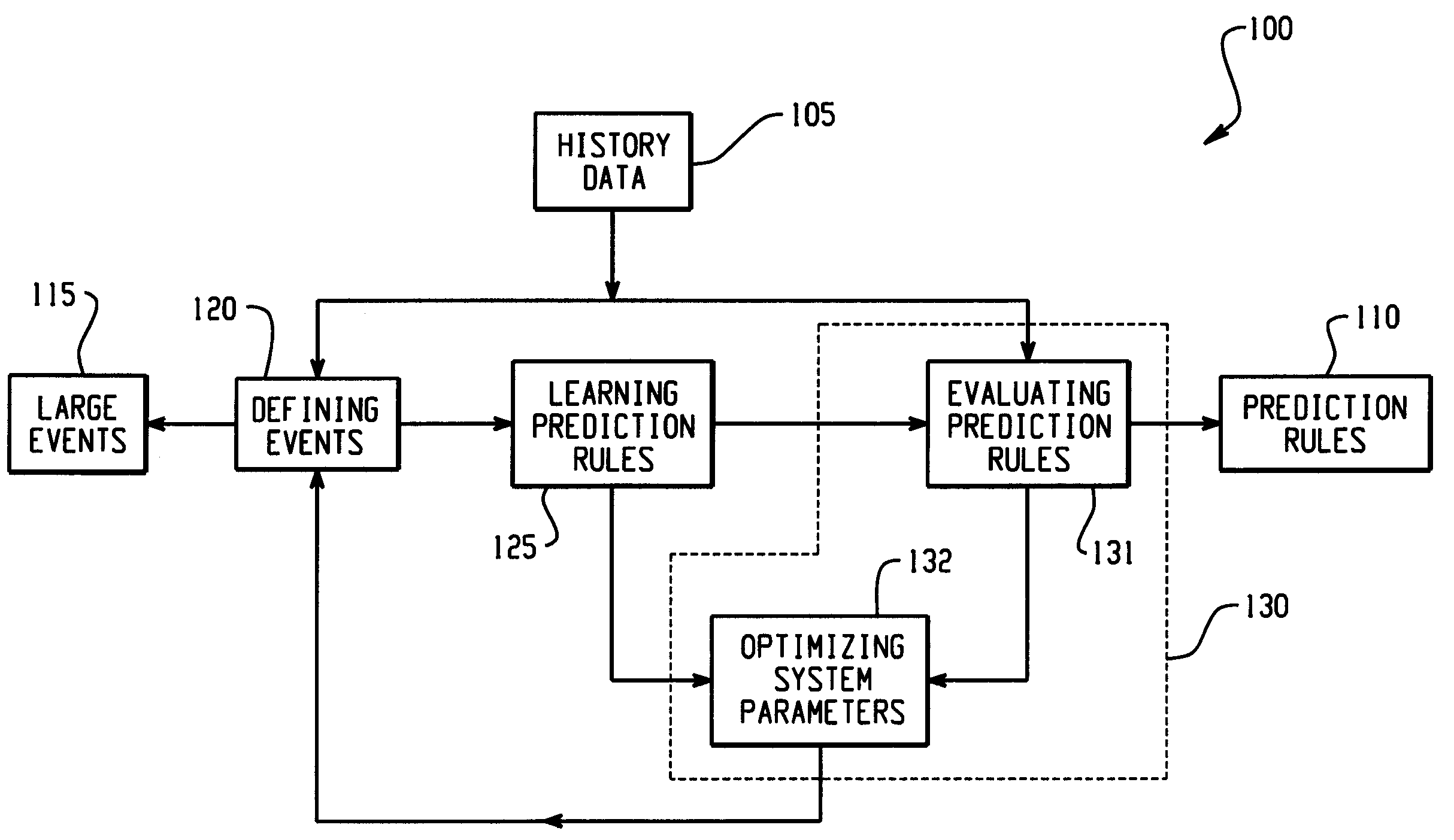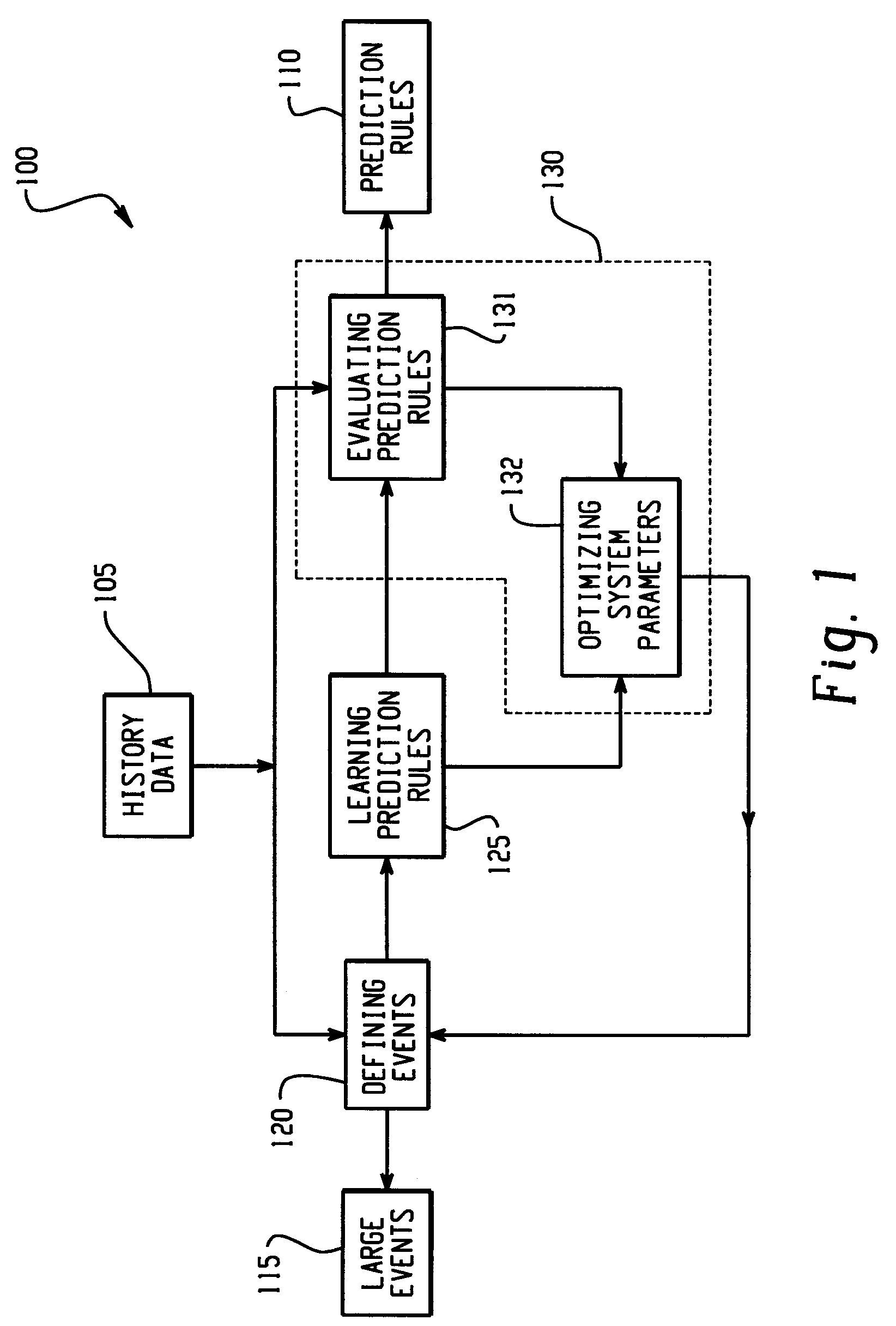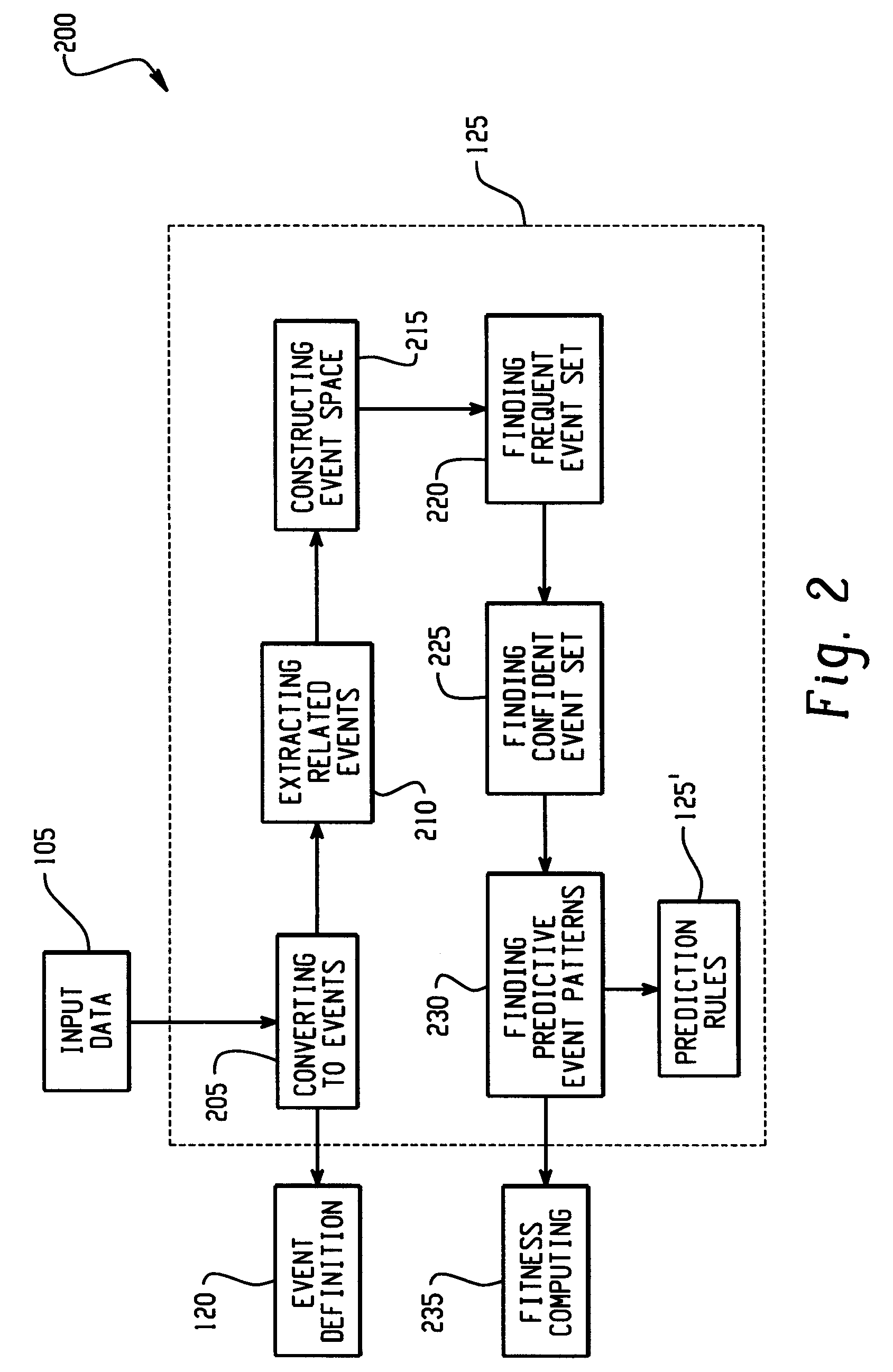Method for characterization, detection and prediction for target events
a target event and detection method technology, applied in the field of target event characterization, detection and prediction, can solve the problems of difficult learning to recognize, difficult to learn to predict infrequent but correlated sub-sequences of events, and difficult to predict machine downtime in manufacturing assembly lines
- Summary
- Abstract
- Description
- Claims
- Application Information
AI Technical Summary
Problems solved by technology
Method used
Image
Examples
Embodiment Construction
[0020]An embodiment of the invention provides an algorithm for detecting predictable large events from measurable data, such as may be used for machine health management in e-manufacture. In an embodiment, the history repair-time data is first converted into event classes using histograms and more generically multidimensional feature-based agglomerative clustering over the data. Then, an event analysis technique is used to extract prediction rules (predictive event patterns) for each large or relevant event (an event with a large repair-time, high importance or high cost). Finally, an event prediction procedure is used to evaluate the effectiveness of each prediction rule as a predictor for the corresponding large event. The predictability of detected large events and the effectiveness of their prediction rules are highly affected by a set of system parameters, such as histogram bin size, analysis window size, the number of event classes in the event definition, and target event ID....
PUM
 Login to View More
Login to View More Abstract
Description
Claims
Application Information
 Login to View More
Login to View More - R&D
- Intellectual Property
- Life Sciences
- Materials
- Tech Scout
- Unparalleled Data Quality
- Higher Quality Content
- 60% Fewer Hallucinations
Browse by: Latest US Patents, China's latest patents, Technical Efficacy Thesaurus, Application Domain, Technology Topic, Popular Technical Reports.
© 2025 PatSnap. All rights reserved.Legal|Privacy policy|Modern Slavery Act Transparency Statement|Sitemap|About US| Contact US: help@patsnap.com



